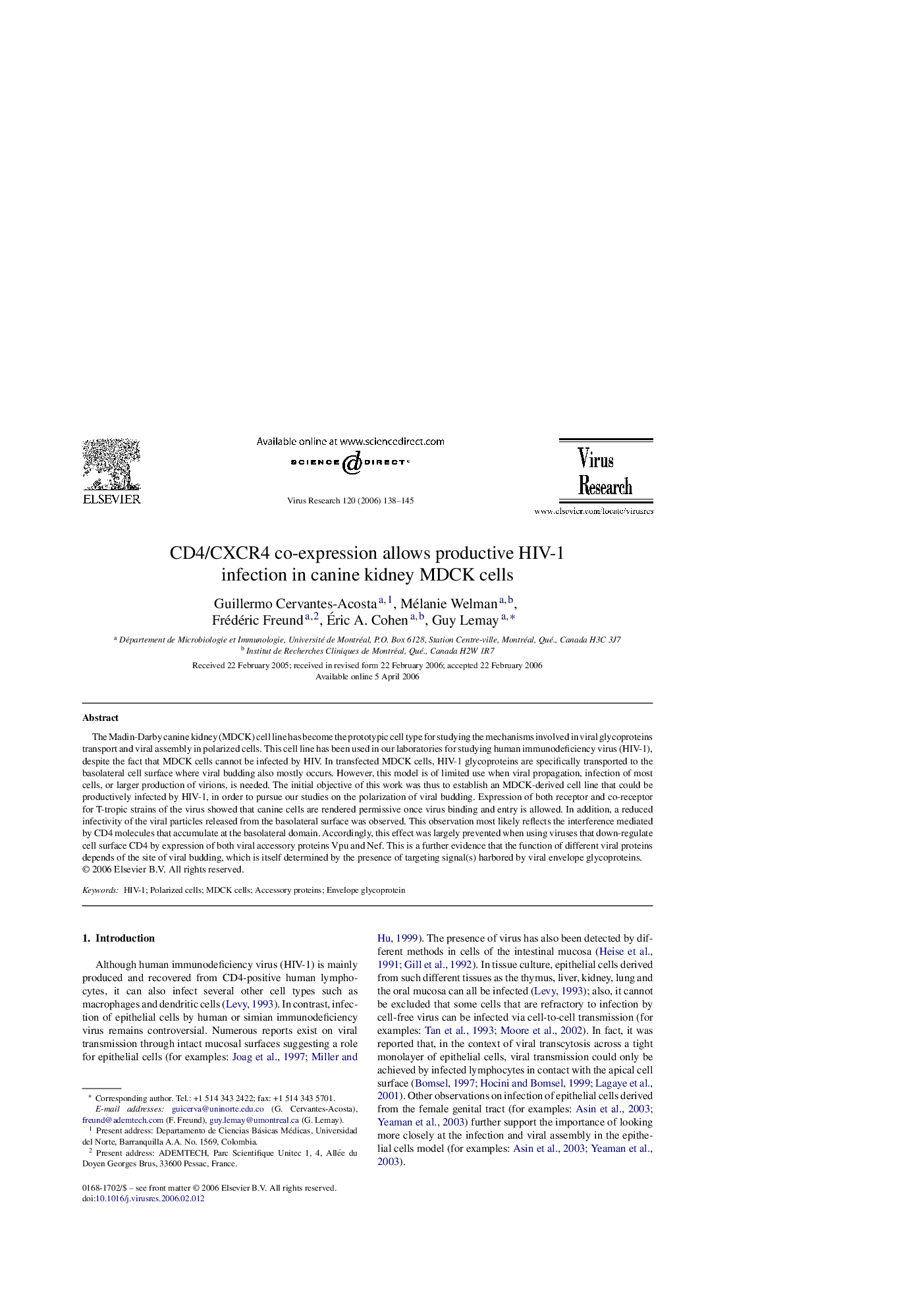| Article ID | Journal | Published Year | Pages | File Type |
|---|---|---|---|---|
| 3431224 | Virus Research | 2006 | 8 Pages |
The Madin-Darby canine kidney (MDCK) cell line has become the prototypic cell type for studying the mechanisms involved in viral glycoproteins transport and viral assembly in polarized cells. This cell line has been used in our laboratories for studying human immunodeficiency virus (HIV-1), despite the fact that MDCK cells cannot be infected by HIV. In transfected MDCK cells, HIV-1 glycoproteins are specifically transported to the basolateral cell surface where viral budding also mostly occurs. However, this model is of limited use when viral propagation, infection of most cells, or larger production of virions, is needed. The initial objective of this work was thus to establish an MDCK-derived cell line that could be productively infected by HIV-1, in order to pursue our studies on the polarization of viral budding. Expression of both receptor and co-receptor for T-tropic strains of the virus showed that canine cells are rendered permissive once virus binding and entry is allowed. In addition, a reduced infectivity of the viral particles released from the basolateral surface was observed. This observation most likely reflects the interference mediated by CD4 molecules that accumulate at the basolateral domain. Accordingly, this effect was largely prevented when using viruses that down-regulate cell surface CD4 by expression of both viral accessory proteins Vpu and Nef. This is a further evidence that the function of different viral proteins depends of the site of viral budding, which is itself determined by the presence of targeting signal(s) harbored by viral envelope glycoproteins.
